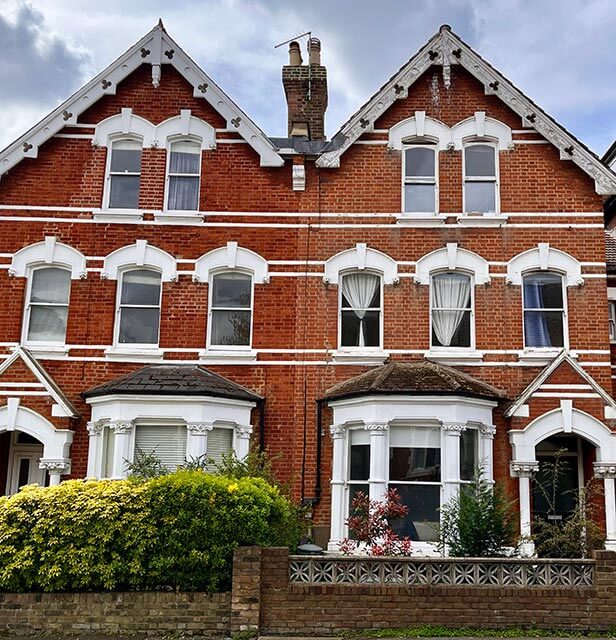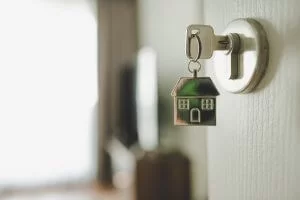Declaration of Trust for Property

Contact
Table of Contents
If you are buying a property jointly, you may want to consider making a declaration of trust to record your financial arrangements. A declaration of trust is particularly relevant for property owners who want to clarify the beneficial interest in jointly owned property. Speak to our solicitors who will be happy to explain the process to you.
What is a Declaration of Trust?
A Declaration of Trust (also known as a Deed of Trust or Trust Deed) is a legally binding document that sets out the financial arrangements between two or more people who own property together. It is used by “tenants in common” to formalise who owns what proportion of the property when they paid or contributed different amounts.
What are beneficial interest and tenants in common?
When two or more people buy property together, they have the choice of owning as joint tenants or tenants in common. When co-owners choose joint tenancy, each party owns an equal share of the property. This means that each co owner has an equal share, regardless of how much each person paid. In this arrangement, the property automatically transfers to the surviving owner in the event of one person’s death.
Tenancy in common is when two or more co-owners own a property but not necessarily in equal shares. For example, one owner may own 40% and the other 60%. The beneficial interest split can be specified in a Declaration of Trust, which is legally binding and sets out how the property shares are divided among the co-owners. There is no automatic right of survivorship with this arrangement, which means that each owner can leave their share of the property to whoever they want in their will. If one owner dies without a will, intestacy rules will determine how their share is distributed.
For tenants in common, the important thing is to make a Declaration of Trust setting out the ownership shares and the beneficial interest split. If you do not, then it’s assumed that you own the property equally, even if one has contributed more to the purchase price than the other.
What are the benefits of a Declaration of Trust?
There’s a lot of money at stake when you buy a property, especially when it comes to a shared property. A Declaration of Trust is a legally binding declaration that takes away the uncertainty and reduces the chance of disagreements down the line. It ensures that everyone is clear on:
- How much each person has put into the property
- How much of the property each person owns
- What should happen if the property is sold or there’s a breakup, including how the net sale proceeds will be divided
- What should happen if one person wants to buy the other out
These declarations help prevent disputes over shared property.
Who is a Declaration of Trust for?
Almost everyone who buys property with someone else as tenants in common will need a Declaration of Trust. It is usually taken out by couples who live together, but it can also be used by family members, friends or investors. For cohabiting or unmarried couples, there are no laws to protect your property investment, meaning you do not have automatic rights to each other’s property. A Declaration of Trust is the best way for an unmarried couple to secure your financial contribution in case you break up.
A Declaration of Trust may be less important if you are buying the property 50/50, as you will both receive an equal split of the proceeds when you eventually sell the property. But if you contributed 70% of the price for example, then you definitely will need to sign a Declaration of Trust to ensure you get 70% (and not just 50%) of the proceeds if the house is sold.
What if I contribute towards the property in other ways?
When people buy property together, the share of ownership can be based on the initial deposit and ongoing mortgage repayments. It is common for one person to pay the deposit and another to contribute in other ways. For example, they might pay a larger share of the mortgage payment or pay to have the home renovated. Mortgage payments and are important in determining what portion each person owns.
It’s also common for someone to move in with their partner, into a home their partner already owns. Their name will not be on the title deeds or mortgage, but they may contribute to the monthly mortgage payments and bills – often for many years. A Declaration of Trust can help protect all of these financial investments, so you’re protected no matter how you contribute.
How does a Declaration of Trust work?
The good thing about a Declaration of Trust is how flexible it is. You can write just about anything in the document to take account of your unique situation. For example, the Declaration of Trust may cover:
- How much each person has paid towards the deposit
- How the mortgage will be paid
- What each person’s ownership share is
- What happens if someone puts in extra money at a later date, for example, they pay for a new roof or kitchen
- How much each owner should pay for outgoings such as utility bills and maintenance
- How you will value the property in the future
- The situation where a third party provides financial help and is not listed on the title deed but still wants to protect their contribution (e.g. the bank of Mum and Dad)
If minor changes are needed, you can add additional clauses to the original document, or prepare a new declaration if substantial changes are required, such as changes in property value or parties involved.
The starting point is to sit down with a solicitor and talk through your situation. Your lawyer will then draft the document for all the owners to sign. There may be tax and inheritance implications when buying property jointly. Your solicitor can advise you on the best course of action and whether you may need other documents, such as a will, to fully protect your interests.
How do you create a Declaration of Trust?
To create a Declaration of Trust the first step is a meeting between all parties and one of our property solicitors. During this meeting, you’ll discuss the details of your property ownership, including each party’s financial contribution, how the beneficial interest will be split, and what should happen to the property in various scenarios, such as a future sale or if circumstances change. Our team will use this information to draft a formal legal document that accurately reflects your financial arrangements and intentions.
Once the draft Declaration of Trust is prepared, all joint owners will have the opportunity to review it and suggest any changes. When everyone is satisfied, the document is signed by all parties in the presence of a witness, making it a legally binding agreement. This ensures that each party’s beneficial interest in the property is clearly defined and protected.
While the Declaration of Trust itself is not registered with the Land Registry, you can request that a restriction be added to the property’s title. This restriction serves as a public notice that a Declaration of Trust exists, offering additional security for the parties involved by preventing the property from being sold or transferred without everyone’s consent.
When should we make a Declaration of Trust?
Ideally, you will make the agreement at the outset when the property is purchased. However, you can make a Declaration of Trust at any time during your ownership.
It’s advisable to draw up a Declaration of Trust (or revisit an existing one) if your circumstances change. For example, you should take a fresh look at your situation if:
- Someone contributes extra money to the property
- You make home improvements and the value of the property increases
- Someone is being bought out
- You want to give away some ownership, for example, to an adult child
- Your living arrangements change, such as a new relationship
Does a Declaration of Trust affect my mortgage?
A Declaration of Trust will not require lender involvement unless it affects the mortgage lender’s security. However, it is best to ask your solicitor. Every situation is different, and there may be occasions where you have to tell the mortgage lender or gain their consent.
What are the tax implications of a Declaration of Trust?
When creating a Declaration of Trust, the way you divide the beneficial interest between joint owners can have tax implications. For instance, Stamp Duty Land Tax (SDLT) may be triggered if there is a change in ownership that means one party taking on a greater share of the mortgage or compensating the other party for their interest. If the property has increased in value and you transfer a share to someone else, Capital Gains Tax (CGT) may also apply.
Also, any rental income the property generates will be subject to Income Tax. How this income is split will be determined by the terms set out in your Declaration of Trust. These tax rules can be complex and the implications vary depending on your circumstances. At Osbornes Law, we can help ensure your Declaration of Trust is drafted to reflect your intentions clearly, while also being tax-efficient.
Culliford v Thorpe – Declaration of Trust Case Law
The recent decision in the case of Culliford v Thorpe [2018] EWHC 426 (Ch) serves as a reminder to cohabiting unmarried couples of the importance of agreeing to a declaration of trust where their interests in a property are shared.
In this case, a co-habiting couple, Mr C and Mr T agreed that a property that was in Mr C’s sole name was to be shared between them yet nothing was put in writing. Mr C subsequently died leaving no will and there then ensued a battle between Mr T and Mr C’s estate. The estate issued possession proceedings requiring Mr T to move out of the property. They claimed he had no interest in the property and Mr T was only living in the property as Mr C had permitted him to do so.
On the other hand, Mr T claimed that he had a beneficial interest in the property and there was a common intention that the property was to be shared. He relied on the argument of the “common intention constructive trust”. This can arise where both parties intended to share a property but where nothing is put in writing. The difficulty Mr T experienced was that the person who could verify his story had passed away and therefore there was nobody to corroborate the common intention.
Nevertheless, such cases are very fact-specific and after considering the evidence the Court agreed that as a matter of fact there had been a common intention that the property was to be shared between Mr C and Mr T.
Mr T was lucky but the best way to avoid such litigation is to ensure that your intentions are set out in writing in a Declaration of Trust which is signed by both parties.
What are my next steps?
If you own or are planning to own property with someone, get in touch. We can talk to you about the various ownership options and whether setting up a Declaration of Trust is the right way forward for you. Our comprehensive service ensures you get all the legal support you need to ensure your interests are fully protected, in plain English that makes the process easy to understand.
To speak with one of our solicitors, contact us by:
- Filling in our online enquiry form; or
- Calling us on 020 7485 8811
Share this article
Contact us today
Call us 020 7485 8811
Email us Send us an email and we’ll get back to you
Related InsightsVIEW ALL
- 18.11.2025
Why Accurate Property Valuations Matter
Insights from a Chartered Surveyor Many clients underestimate the importance of an expert property valuation. Whether you’re extending a...
Read more - 23.10.2024
Buying and Selling Homes in Hampstead Garden Suburb
Buying a house in Hampstead Garden Suburb While character, green spaces and the best of domestic architecture are big draws...
Read more - 12.8.2024
Buying a Second Home
Buying a second home is an exciting step, but it comes with several considerations, including understanding the rules for buying...
Read more - 13.2.2023
Transfer of Equity Stamp Duty
Do I pay Stamp Duty Land Tax when transferring Property into my partner’s name? When it comes to property...
Read more - 13.2.2023
Shared Ownership Stamp Duty
Do you pay stamp duty on shared ownership? When you buy a new shared ownership property, you are given two...
Read more - 8.2.2023
Severance of a Joint Tenancy
Severing a Joint Tenancy Normally, when couples buy a property together they do so as joint tenants. This means they...
Read more - 8.2.2023
Tenants in Common vs Joint Tenants
Tenants in Common vs Joint Tenants: Which is best for buying a property together? When buying a property with someone...
Read more - 20.1.2023
Stamp duty tax to remain the same until 2025
Good news for buyers as the current SDLT rates will remain until 2025 Buyers looking to purchase this year will be...
Read more - 23.9.2022
First-time buyer stamp duty exemption
Stamp duty is the bane of every home buyer, with only first-time buyers being exempt from paying the tax if...
Read more - 30.8.2022
What is a transfer of equity?
Transfer of equity in divorce Transfer of equity refers to the process of transferring part or all of a property...
Read more - 26.6.2021
The Risks Of Buying Properties Off Plan!
Buying Property Off Plan The Daily Mail reported that 300 families a week have to move into shoddy newly built homes....
Read more - 30.1.2021
Making Alterations to a Leasehold Property
What is a Leasehold Property? There are two main types of property in England and Wales, freehold and leasehold property....
Read more - 5.1.2021
How to Sell Your House Quickly
10 tips for a fast house sale Thinking about marketing your property for sale? Simon Nosworthy, Conveyancing Solicitor at Osbornes, sets...
Read more - 22.5.2019
What Is Equity Release?
Equity release is a type of financial product available to homeowners which allows them to access some of the equity...
Read more - 25.3.2019
London property ‘hotspots’
Property professionals across the country have made their predictions as to what is in store for the property market over...
Read more















